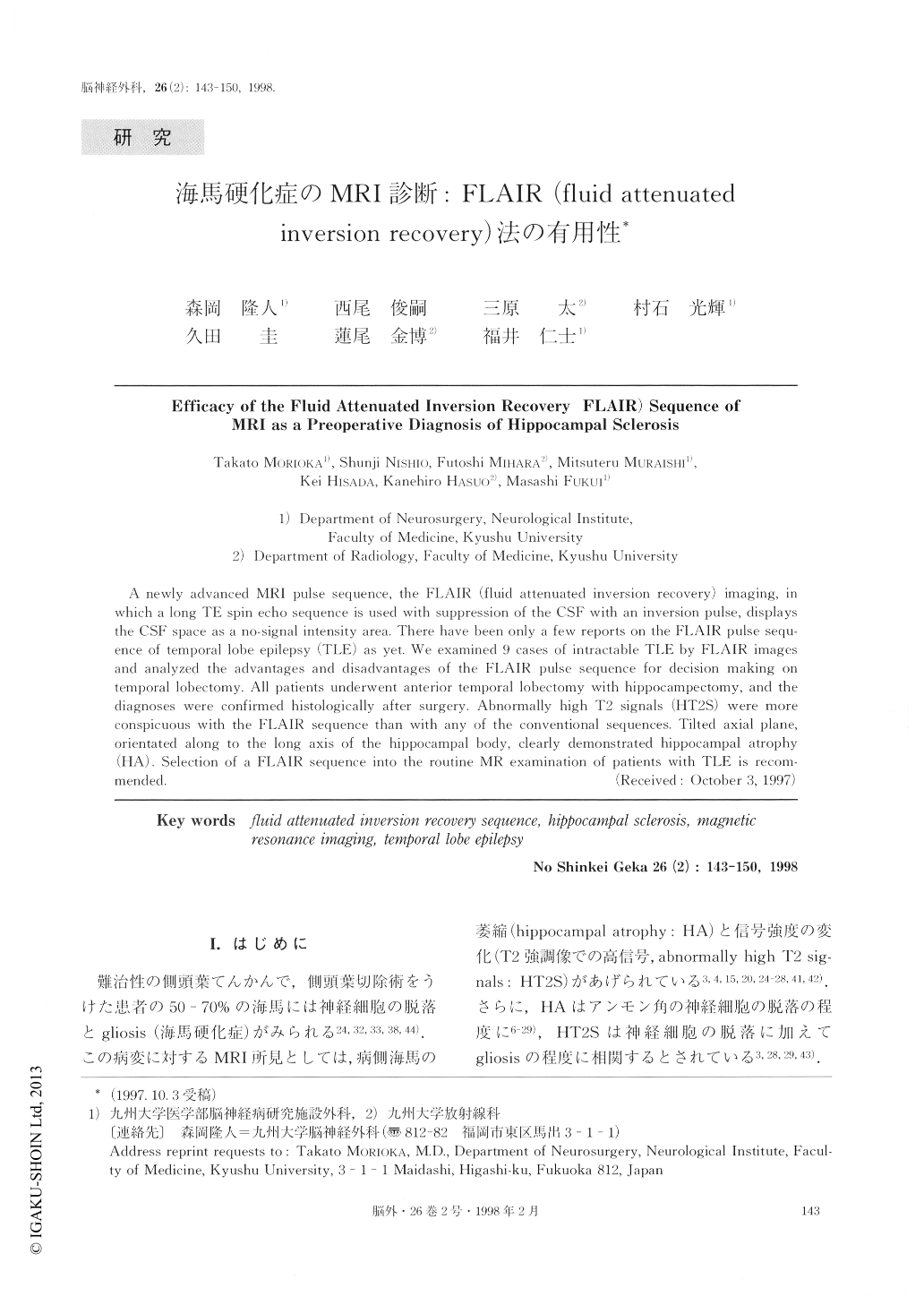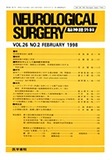Japanese
English
- 有料閲覧
- Abstract 文献概要
- 1ページ目 Look Inside
I.はじめに
難治性の側頭葉てんかんで,側頭葉切除術をうけた患者の50-70%の海馬には神経細胞の脱落とgliosis(海馬硬化症)がみられる24,32,33,38,44).この病変に対するMRI所見としては,病側海馬の萎縮(hippocampal atrophy:HA)と信号強度の変化(T2強調像での高信号,abnormally high T2 sig-nals:HT2S)があげられている3,4,15,20,24-28,41,42).さらに,HAはアンモン角の神経細胞の脱落の程度に6-29),HT2Sは神経細胞の脱落に加えてgliosisの程度に相関するとされている3,28,29,43).このようなMRI所見はそのてんかん焦点の側方性の判定に有用であるが,海馬硬化の程度は軽度のgliosisから広範囲なgliosisと神経細胞の脱落まで様々であり32),特に硬化所見が海馬の灰白質に限られる時には,MRIで見逃されることもある6,7,26).したがって,報告されているMRIによる海馬硬化の診断率は30%5,28)から70-91%4,18,21,24,26)とまちまちである.
FLAIR法(fluid attenuated inversion recoverysequence)は,自由水の信号を抑制したT2強調画像が得られるMRIの撮像法の一種で,T2強調画像の高い病変描出能を残しながら,T1強調画像に似た画像である.したがって,神経解剖が把握しやすく9,10,16,17,37),種々の中枢神経疾患でその有用性が指摘されているが39),てんかん焦点の診断に関する報告は少ない2,23,39).われわれは,FLAIR法を側頭葉てんかん症例に適応し,従来の撮像法の画像と比較した.その結果本法は側頭葉てんかんに対する外科的治療の適応を判断する上で極めて有用な撮像法であると思われたので報告する.
A newly advanced MRI pulse sequence, the FLAIR (fluid attenuated inversion recovery) imaging, inwhich a long TE spin echo sequence is used with suppression of the CSF with an inversion pulse, displaysthe CSF space as a no-signal intensity area. There have been only a few reports on the FLAIR pulse sequ-ence of temporal lobe epilepsy (TLE) as yet. We examined 9 cases of intractable TLE by FLAIR imagesand analyzed the advantages and disadvantages of the FLAIR pulse sequence for decision making ontemporal lobectomy. All patients underwent anterior temporal lobectomy with hippocampectomy, and thediagnoses were confirmed histologically after surgery. Abnormally high T2 signals (HT2S) were moreconspicuous with the FLAIR sequence than with any of the conventional sequences. Tilted axial plane,orientated along to the long axis of the hippocampal body, clearly demonstrated hippocampal atrophy(HA). Selection of a FLAIR sequence into the routine MR examination of patients with TLE is recom-mended.

Copyright © 1998, Igaku-Shoin Ltd. All rights reserved.


